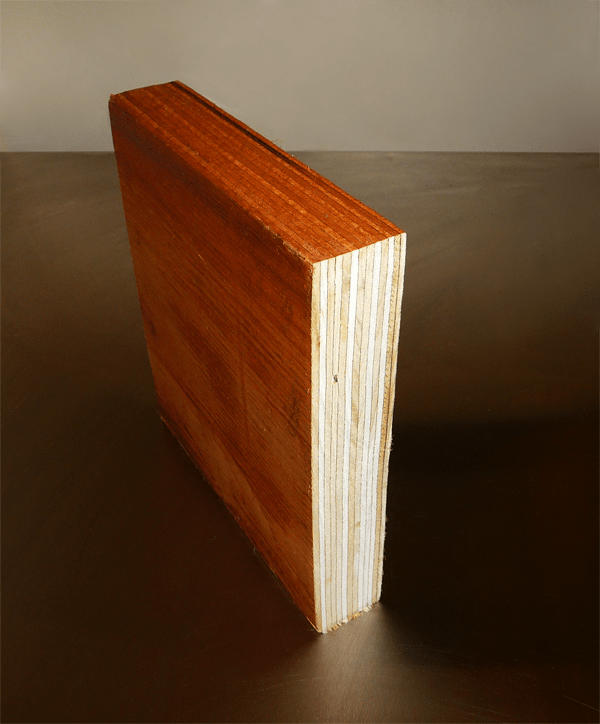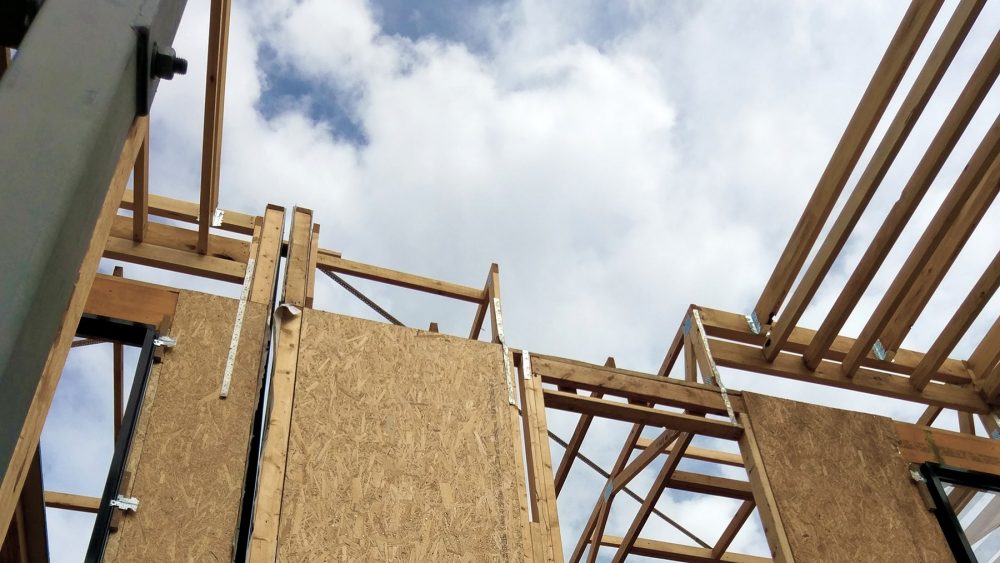One of Buildtec Group’s priorities as we start the new decade is how we can continue to actively honour our commitment to environmental responsibility by building sustainably – and one of our methods involves how we use one of the oldest construction materials known: timber.
In 2020, and in a first for Buildtec, we will be using single direction laminated veneer lumber (LVL) as the main structural component to build a new apartment complex located next door to our Head Office in Kent Town. LVL is a type of engineered (i.e. manufactured) wood. According to the Forest and Wood Products Australia (FWPA) website Wood Solutions, LVL is made by attaching thin slices of wood together using heat and pressure (see image below) to create a super strong timber.

Image: Laminated veneer lumber detail by KLski is licenced under CC BY SA-3.0.
LVL is as robust as steel, concrete and solid timber because the grains of each slice of wood are run in the same (i.e. single) direction when they are joined during the manufacturing process. This technique, according to the FWPA, makes LVL ‘stronger, straighter and more uniform than solid timber’ and overcomes wood’s natural limitations, like knots, which can cause weakening. LVL also doesn’t warp as much as solid timber and can be custom made to required lengths and shapes in the factory.
We’ll be using an LVL panelised prefabricated system to construct the walls and floors of our Kent Town apartment project. Panels will be cut to the exact size in the factory and then transported to site where they will be joined.
Our Group Director Michael Carrocci, who is overseeing the Kent Town project, says this method of building means the project can be ‘completed in less time, produce less waste and deliver a higher quality result’.
Michael believes sustainability is driving ‘the global renaissance’ in timber construction because wood is more environmentally friendly than other building materials such as concrete and steel.
Here are Michael’s top four reasons for using timber products in construction:
1. Low embodied energy
Embodied energy is a term that used to describe the amount of energy that’s needed to extract, manufacture and transport construction materials to a building site. Timber contains less embodied energy than other construction materials, like steel and concrete, because it requires less energy to produce. By using a low embodied energy material, like timber, early on in a building’s life cycle, the structure’s overall environmental impact can be minimised.
2. Carbon storage
Trees are carbon dioxide ‘sponges’ – they remove it from the atmosphere and then store it. According to the NSW Forestry Corporation, they absorb carbon dioxide ‘so efficiently that approximately half the dry weight of a tree is carbon’. What’s equally as impressive is that when timber is harvested, and manufactured into products, the carbon is still retained. Timber is so effective at this that the Forestry Corporation estimates ‘two thirds of Australia’s total greenhouse gas emissions are stored in timber products such as tables, chairs and house frames’. Using timber as a key construction material, therefore, helps reduce greenhouse gas emissions.
3. Renewable resource
‘The ultimate renewable’: that’s how the Australian Government describes wood. The beauty of trees is that they are a natural resource that’s in constant supply: they just need time to grow. According to Timber New South Wales, timber forests are managed using ‘a cyclical process’ where trees are continually harvested and replanted. With proper thought and planning given to forest regrowth, timber is a sustainable and renewable alternative for the construction industry.
4. Locally available
The good news for our industry – and for the wider national economy – is that good quality timber is in plentiful supply here in Australia. According to the Federal Government, there are currently 6.3 million hectares of publicly managed native forests which can be harvested. The Government is also partnering with the forestry industry to future-proof supply with a sustainability commitment to plant 1 billion new trees within the next decade which means Australian timber should be in good supply for many years to come.



Comments are closed.